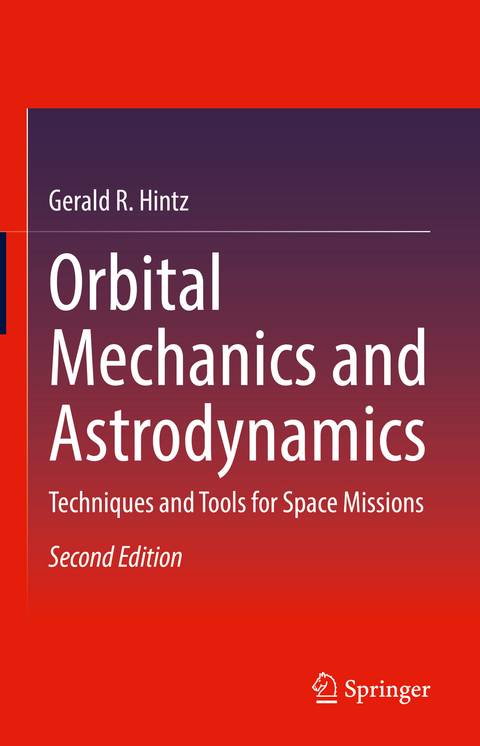
Orbital Mechanics and Astrodynamics
Springer International Publishing (Verlag)
978-3-030-96572-3 (ISBN)
Now in an updated second edition, this classroom-tested textbook covers fundamental and advanced topics in orbital mechanics and astrodynamics designed to introduce readers to the basic dynamics of space flight. The book explains concepts and engineering tools a student or practicing engineer can apply to mission design and navigation of space missions. Through highlighting basic, analytic, and computer-based methods for designing interplanetary and orbital trajectories, the text provides excellent insight into astronautical techniques and tools. The second edition includes new material on the observational basics of orbit determination, information about precision calculations for data used inflight, such as Mars 2020 with the Ingenuity Helicopter, and improvements in mission design procedures, including the automated design of gravity-assist trajectories.
Orbital Mechanics and Astrodynamics: Techniques and Tools for Space Missions is ideal for studentsin astronautical or aerospace engineering and related fields, as well as engineers and researchers in space industrial and governmental research and development facilities, as well as researchers in astronautics.
lt;p>Dr. Gerald Hintz is an Adjunct Professor in the Department of Astronautical Engineering at the University of Southern California. He was a technical manager and senior engineer at NASA's Jet Propulsion Laboratory for 37 years before his retirement. He worked on the development and flight operations of space missions, including Viking I and II (two orbiters and two landers to Mars), Mariner 9 (orbiter to Mars), Seasat (an Earth orbiter), Voyager II (for the Neptune encounter), Pioneer Venus (orbiter to Venus), Galileo (probe and orbiter to Jupiter), Ulysses (solar polar mission), Cassini-Huygens (orbiter to Saturn and lander to Titan), and Aquarius (a future Earth orbiter). As a technical manager, he provided multi-mission navigation support via the Deep Space Network, developed a computer-based training and reference tool for the Orbit Determination Program, and provided a successful orbital design for an Earth-orbital mission.
1. Fundamentals of Astrodynamics.- 2. Keplerian Motion.- 3. Orbital Maneuvers.- 4. Techniques of Astrodynamics.- 5. Non-Keplerian Motion.- 6. Spacecraft Rendezvous.- 7. Navigation and Mission Design Techniques and Tools.- 8. Changing from Mission Design to Flight Operations.- 9. Further Study.
| Erscheinungsdatum | 17.10.2022 |
|---|---|
| Zusatzinfo | XXV, 448 p. 226 illus., 16 illus. in color. |
| Verlagsort | Cham |
| Sprache | englisch |
| Maße | 155 x 235 mm |
| Gewicht | 916 g |
| Themenwelt | Technik ► Luft- / Raumfahrttechnik |
| Schlagworte | astronautics • Celestial mechanics • Circumlunar trajectories • Clohessy-Wiltshire equations • fundamentals of astrodynamics • Interplanetary or earth-orbiting trajectories • Keplerian or non-Keplerian motion • Orbital mechanics • Rocket equation • spacecraft navigation • Space Mission Design |
| ISBN-10 | 3-030-96572-4 / 3030965724 |
| ISBN-13 | 978-3-030-96572-3 / 9783030965723 |
| Zustand | Neuware |
| Haben Sie eine Frage zum Produkt? |
aus dem Bereich


